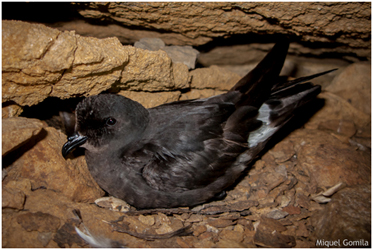Understanding the processes driving seabirds' reproductive performance through trophic interactions requires the identification of seasonal pulses in marine productivity. In this study, it was investigated the sequence of environmental and biological processes driving the reproductive phenology and performance of the storm petrel in the Western Mediterranean. The enhanced light and nutrient availability at the onset of water stratification (late winter/early spring) resulted in annual consecutive peaks in relative abundance of phytoplankton, zooplankton and ichthyoplankton. The high energy-demanding period of egg production and chick rearing coincided with these successive pulses in food availability, pointing to a phenological adjustment to such seasonal patterns with important fitness consequences. Indeed, delayed reproduction with respect to the onset of water stratification resulted in both hatching and breeding failure. This pattern was observed at the population level, but also when confounding factors such as individuals' age or experience were also accounted for. This study provides the first evidence of oceanographic drivers leading to the optimal time-window for reproduction in an inshore seabird at southern European latitudes, along with a suitable framework for assessing the impact of environmentally driven changes in marine productivity patterns in seabird performance. informacion[at]ebd.csic.es: Ramírez et al (2016) Oceanographic drivers and mistiming processes shape breeding success in a seabird. Proc R Soc B Doi: 10.1098/rspb.2015.2287
http://rspb.royalsocietypublishing.org/content/283/1826/20152287

 Las altas temperaturas están provocando que las lagunas y las marismas de Doñana pierdan agua rápidamente
Las altas temperaturas están provocando que las lagunas y las marismas de Doñana pierdan agua rápidamente




